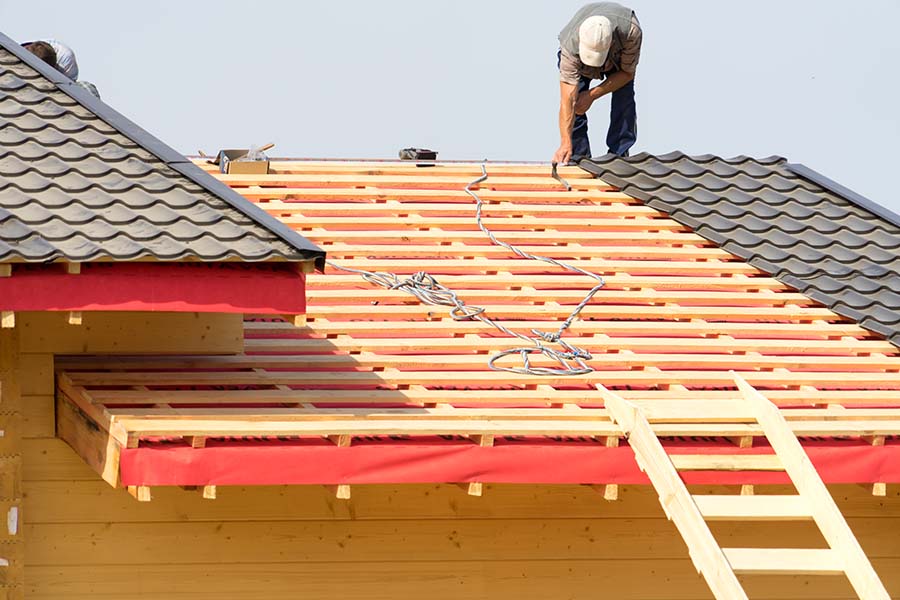Key Takeaways:
- Roofing companies use industry jargon; it's helpful to know some common roofing terminology.
- Your roof is a significant investment, and you'll want to be as informed as possible before making any decisions.
- To help you out, we've compiled a list of roofing terminologies and what they mean.
- Understanding these terms will guarantee that you communicate better with your roofer.
- With proper communication and knowledge, you can be sure to have a great experience
- City Roofing offers a 100% satisfaction guarantee to experience the best roofing service.
When repairing or replacing your roof, it would be helpful to know the language your roofers speak – the roofing jargon. Many terms are specific to the roofing industry, and unless you know what they mean, you could be in for a surprise when it comes time to pay the bill. This blog post will cover some standard roofing terms and what they mean for you and your home.
Even though you can ask your roofing company to explain terms in layman's terms, it is still helpful to have a base understanding of some common roofing terminology. After all, your roof is a significant investment, and you'll want to be as informed as possible before making any decisions.
32 Essential Roofing Terms
Asphalt: A type of black tar used in roofing derived from petroleum. It is a sticky, waterproof substance that helps to hold shingles in place and keep water out. Eaves: The roof's edge extends beyond the house's exterior wall. The eaves are essential for protecting the house from water damage. Gable: It's the triangular part of a wall between the edges of a sloped roof. Gables can be either open or closed. An open gable has openings such as windows or vents, while a closed gable does not. Hip: The intersection of two sloping sides of a roof. A hip roof has four sides, each of which slopes downwards towards the center of the roof. Ridge: The highest point on a pitched roof, where the two sides meet. The ridge is usually capped with a ridge beam or ridge board to provide support. Roof Deck: The structural surface onto which the roofing material is installed. Usually made of wood or metal, it's responsible for supporting the weight of the roofing system. Underlayment: It is a water-resistant barrier installed over the roof deck before shingles, or other roofing materials are installed. Underlayment helps to prevent leaks and protect the roof deck from water damage. Shingles: The individual pieces of roofing material installed on a roof. Shingles can be made of asphalt, wood, slate, or metal. Flashing: Pieces of metal or other material installed at the points where the roof meets a wall or chimney. Flashing helps prevent water leaks by directing water away from these vulnerable areas. Gutter: A channel installed along the edge of a roof. Gutters collect and direct rainwater from the building, preventing water damage to the roof and foundation. Downspout: A pipe at the end of a gutter. Downspouts direct rainwater away from the building, preventing water damage to the roof and foundation. Cedar: A wood used in roofing known for its durability and resistance to rot. Cedar shingles are a popular choice for homes in coastal areas because they can withstand high winds and salt spray. Clay: A type of roofing tile made from fired clay. Clay tiles are known for their longevity and ability to withstand extreme weather conditions. Composite: A roofing material made from a combination of different substances, such as asphalt and fiberglass. Composite shingles are popular for homeowners because they are durable and easy to install. Fascia: The board that runs along the roof's edge, between the rafters and the gutters. The fascia supports the gutters and protects the roof's edges from water damage. Soffit: The board that runs along the underside of the roof eaves. The soffit provides ventilation for the attic and protects the rafters from water damage. Rafter: A rafter is one of the sloped beams that make up a roof frame. Rafters extend from the ridge beam at the roof's peak to the wall plates or eaves at the roof's edges. Truss: A truss is the framework of rafters and other members that supports a roof or bridge. A typical roof has several trusses. Ridge Beam: The ridge beam is the highest horizontal member of a roof truss. It is often made of two or more pieces of lumber glued and nailed together. Roof Valleys: A roof valley is formed where two sloping roofs come together. It is usually lined with metal or shingles to prevent leaks. Dormer: A dormer is a window that projects from the slope of a roof. It often has a small roof. Racking: Racking is the process of installing roofing materials on a roof. It usually starts at the bottom and works up. Granules are small, pebble-like pieces covering the shingles' surface. They protect the shingles from UV rays and add color. Lap Cement: Lap cement is a special adhesive used to adhere shingles to the roof. It is applied in a zig-zag pattern. Reroofing: It's the procedure of installing a new roof. This is usually done when the old roof is in bad condition. Shed Roof: A shed roof has a single slope. You can find it in sheds and other small structures. Sheathing: Sheathing is the layer of material used to cover the roof. It provides a surface for the shingles to be installed on. Caulk: Caulk is a sealant used to fill gaps and cracks. It helps to prevent water from entering the home. Roofing Nails: Roofing nails are special nails used to install shingles. They have a large head and a long shank. Tear Off: Tear off is removing the old roofing material. This is done before installing a new roof. Ventilation: Ventilation is the process of allowing air to flow through the attic. This helps keep the temperature down and prevents moisture from building up. Chimney: A chimney is a structure that extends from the roof. It is used to vent smoke and other gases from home.

These are a few of the many roofing terms you should know when working with a roofing company. Knowing these terms will guarantee that you communicate better with your roofer and understand the process of installing a new roof. If you have any questions, ask your roofer for clarification. You can have a great experience working with your roofing company with proper communication and understanding.
Check out our blog about four reasons to call your local roofer. City Roofing is an ideal company for your roofing needs in Miami, FL. We offer many roofing services to meet your needs, and our professionals will ensure that your roof is in top condition. We also offer a 100% satisfaction guarantee so that you can experience the best roofing service. Contact City Roofing today to get started!
Subscribe to City Roofing's Blog




Comments